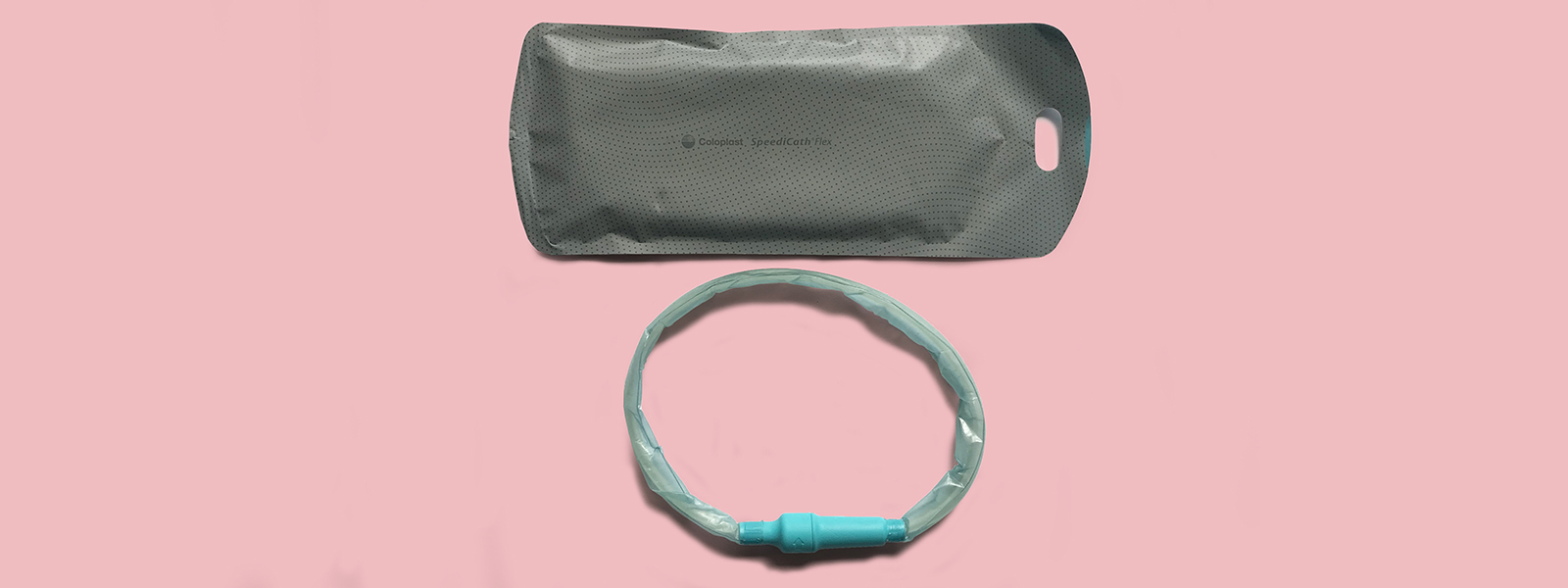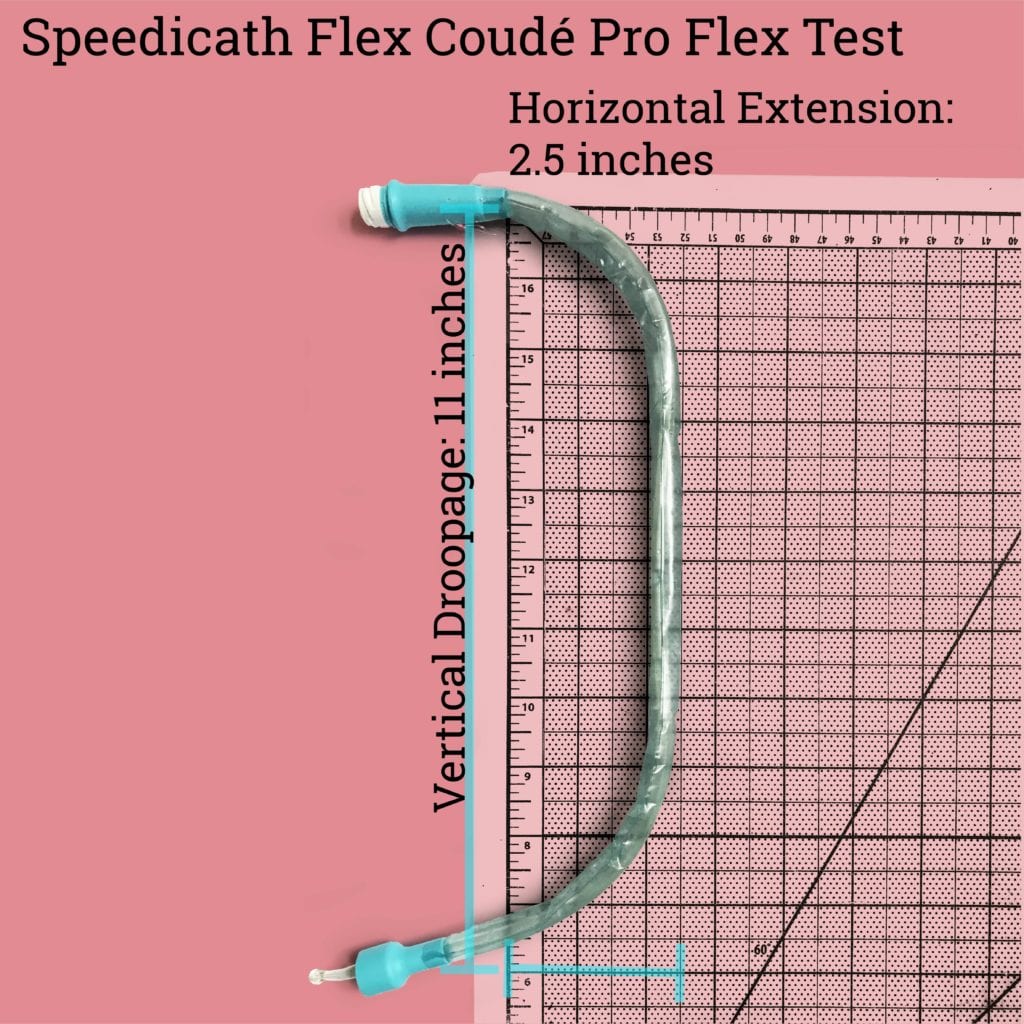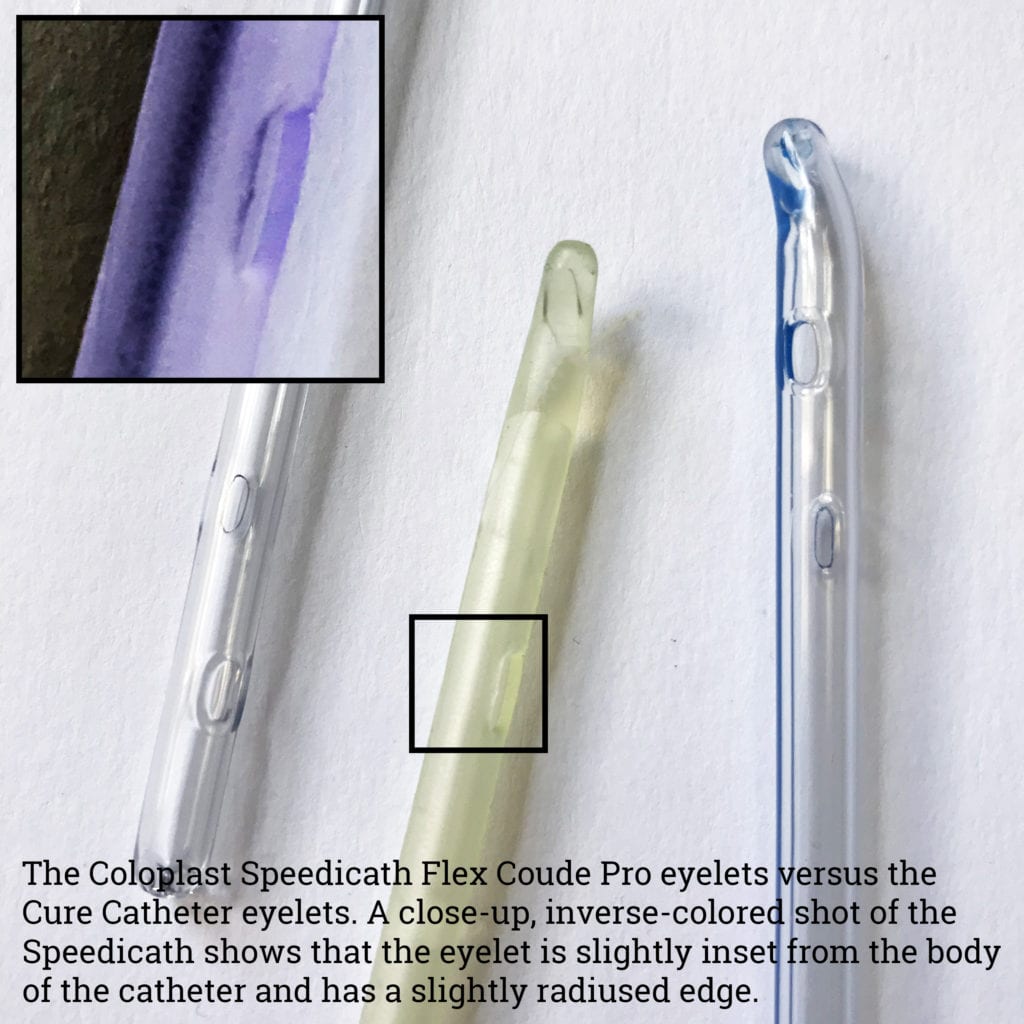Coloplast SpeediCath Flex Coudé Pro

Product Overview
Available Lengths: 13 inches (Male), 13 inches (Pocket)
Available French Sizes: 10, 12, 14, 16 (Male only)
Available Tips: Coudé (Olive Tip)
Pros
A full-length insertion sleeve makes it a breeze to insert this catheter without contaminating it with your hands.
Radiused and inset catheter eyelets make urethral trauma less likely.
A flexible coudé tip helps the catheter navigate unconventional anatomies and/or blockages.
The packaging makes the footprint of this catheter fairly compact and allows you to discreetly dispose of it.
Our Verdict
The Speedicath Flex Coudé Pro is a highly considered product and it shows in this catheter’s details. You’ll still need to wipe down the tip of the penis before inserting this catheter to prevent it from being inoculated with germs on its way to your bladder. If you don’t mind the slightly rough texture of this catheter and you struggle with urethral blockages, it may be worth trying this catheter out!
Cons
There’s no insertion aid to prevent catheter contamination from the urethral opening.
The hydrophilic coating isn’t evenly deposited onto the surface of the catheter. It’s possible to feel differences in texture along the length of the catheter.
The catheter comes with a ton of wetting liquid that will need to be discarded. The liquid smells of chemicals.
Material
The Speedicath® Flex Coudé Pro is a ready-to-use catheter made out of polyurethane, which sets it apart from many other catheters. Polyurethane is non-toxic and is more expensive than PVC, which is cheap but can negatively impact human health. Polyurethane can actually soften slightly at body temperature, potentially making it easier to insert once it’s inside the body. Polyurethane has good biocompatibility, and isn’t known to cause allergic reactions. It has unique chemistry owing to the fact that it is a segmented polymer that gives it both flexibility and strength.
The catheter is coated with a hydrophilic coating made out of polyvinyl pyrrolidone (PVP). More on PVP below in the lubrication section!
Flexibility

It’s hard to measure the flexibility of this catheter because it’s stored in a looped format, which changes its geometry relative to other male catheters. Still, when hung from the funnel, it droops down 11 inches while extending out 2.5 inches, making it a very flexible catheter indeed. The touchless insertion sleeve and the fact that it comes pre-lubricate helps to prevent that flexibility from becoming an issue.
Packaging
The Speedicath® Flex Coudé Pro comes in standard and pocket versions, where the pocket version of the catheter is double looped so that it is more portable and easily pocketable. The catheter itself has an integrated insertion sleeve that holds a polyethylene glycol (PEG) solution that hydrates the catheter. Based on patent filings, it’s likely that PEG 2000 is being used in these catheters. This specific formulation of PEG has been shown to be safe (e.g. not cause irritation) in some scientific studies.
The catheter comes in a looped format, where the funnel is screwed into a corresponding stiff piece of integrated packaging near the catheter’s tip. This is a water tight connection, which helps prevent the PEG from leaking (there’s a lot of it) and urine from leaking after the catheter has been used.
The external packaging of the catheter is subtly designed – many manufacturers are starting to embrace non-medical packaging for their premium products. It features oval shaped pull tabs that aren’t quite as large as other easy-open tabs that let users open the packaging. There’s a sticker on the back of the package that can be used to reseal the package after the catheter has been used so that it’s easier to dispose of discreetly. This sticker isn’t quite sticky enough to mount the package to a wall or vertical surface.
Unlike the packaging for other hydrophilic catheters, this catheter comes packaged not in foil but in PET – this is apparently to lessen the environmental impact per the regulatory submission for this catheter. It’s also likely that evaporation of the wetting agent isn’t as much of an issue as with other hydrophilic catheters as the liquid is kept in place by the insertion sleeve and the water-tight seal between the funnel and integrated packaging near the catheter tip.
Lubrication
PVP is the hydrophilic coating that gives this catheter its lubricious quality. PVP is generally considered to be safe, but can cause allergic reactions in rare cases – so check with your physician if you’re unsure as to whether or not this catheter is right for you.
The catheter comes packaged with quite a lot of PEG water to lubricate it and keep the hydrophilic coating moist. Like PVP, it’s considered to be an inert, safe material, but there are folks who are allergic to it. You’ll need to drain the catheter of PEG prior to using it since there’s so much. The PEG does make the catheter smell kind of like a science project, similar to the Hollister® VaPro™ Coudé Touch Free catheter.
In reviewing this product, we noticed an uneven deposition of the hydrophilic coating on the surface of this catheter. The surface of this Speedicath® variant wasn’t quite as rough as others that we’ve reviewed, but we could feel distinct differences in different regions of the catheter.
Insertion
Video training materials for these catheters (and more!) made by Coloplast® can be accessed here.
This catheter comes with an integrated insertion sleeve that covers its full length, making touchless (and mess-less) insertion much easier than with other catheters that come with the smaller insertion sleeves. It lacks an introducer tip – which can be problematic as catheter insertion can transfer pathogens from the urethral meatus to the bladder. If you’re worried about UTIs, make sure you wipe down your urethral opening before catheterizing.
The eyelets of this catheter are slightly radiused and inset from the rest of the catheter (more so than with the plain Speedicath® catheter), preventing urethral trauma (but not as polished as the Cure Catheter®. They are thinner, which 180Medical suggests can lead to less urethral trauma because the urethral tissue doesn’t get caught in them as much as they would in larger eyelets.

The coudé tip is much more flexible than other coudé tips that we’ve seen – perhaps because of the polyurethane base material. This flexibility should only increase when the catheter is inserted into the body, which has the functional benefit of making it easier for this catheter to bypass blockages in the urethra.
Adverse Events
There were no product complaints for the Speedicath® Flex Coudé Pro registered with the FDA in 2019.

The review of FDA Medical Device Reports from 2019 provides a limited snapshot of recent product performance in the marketplace.